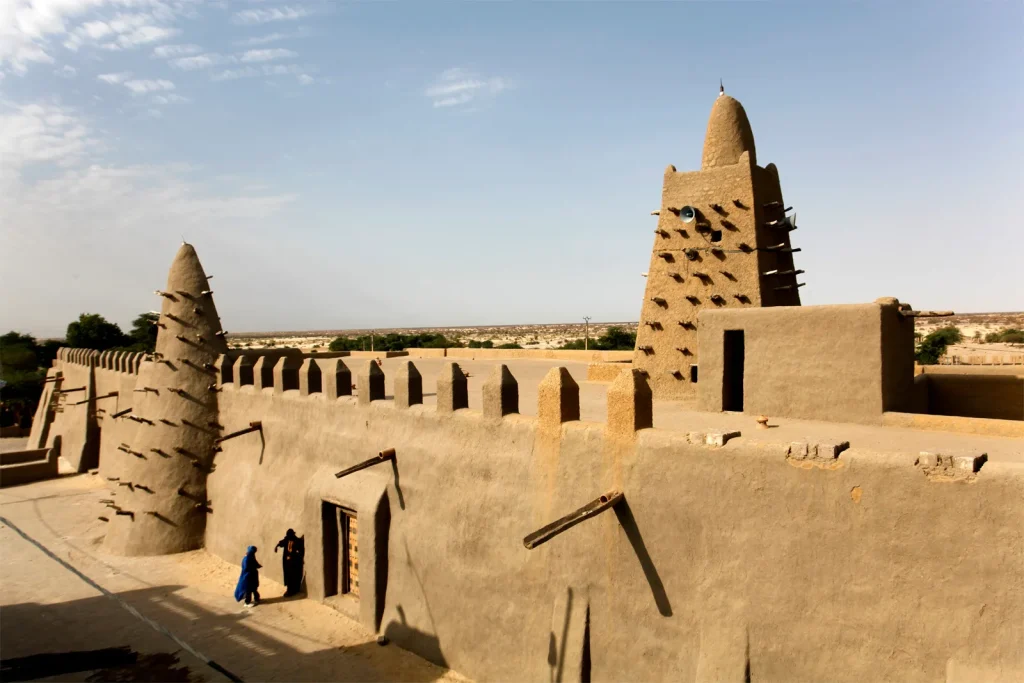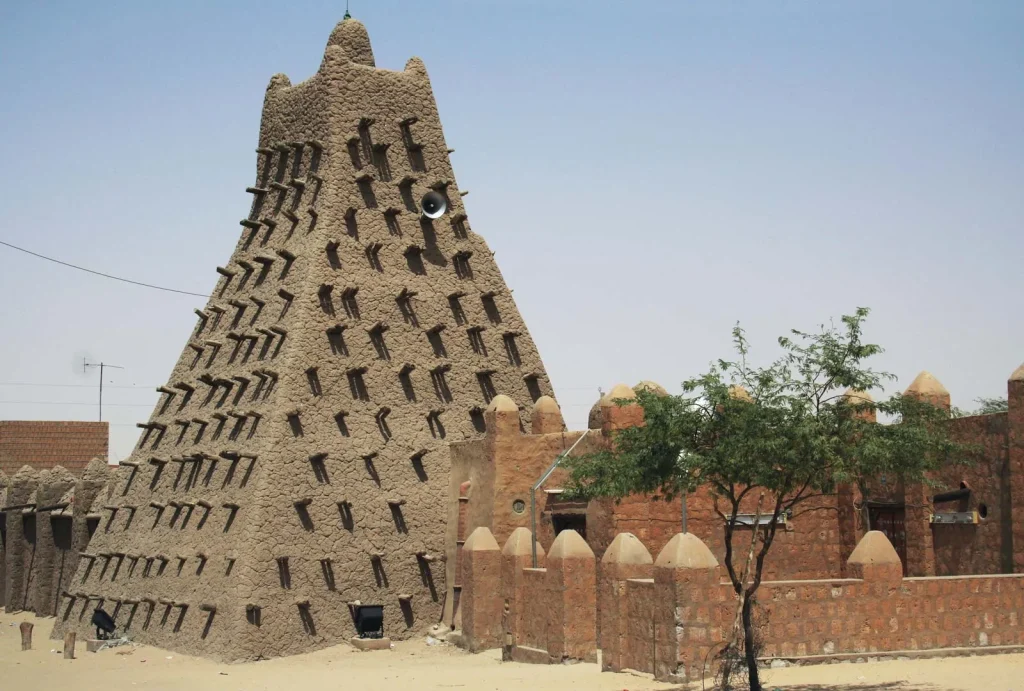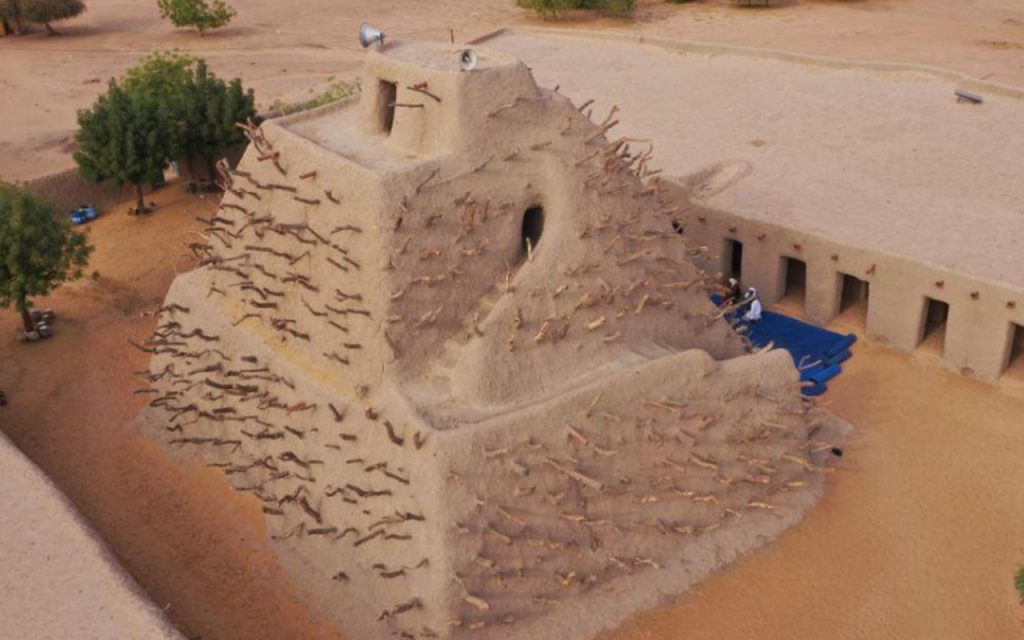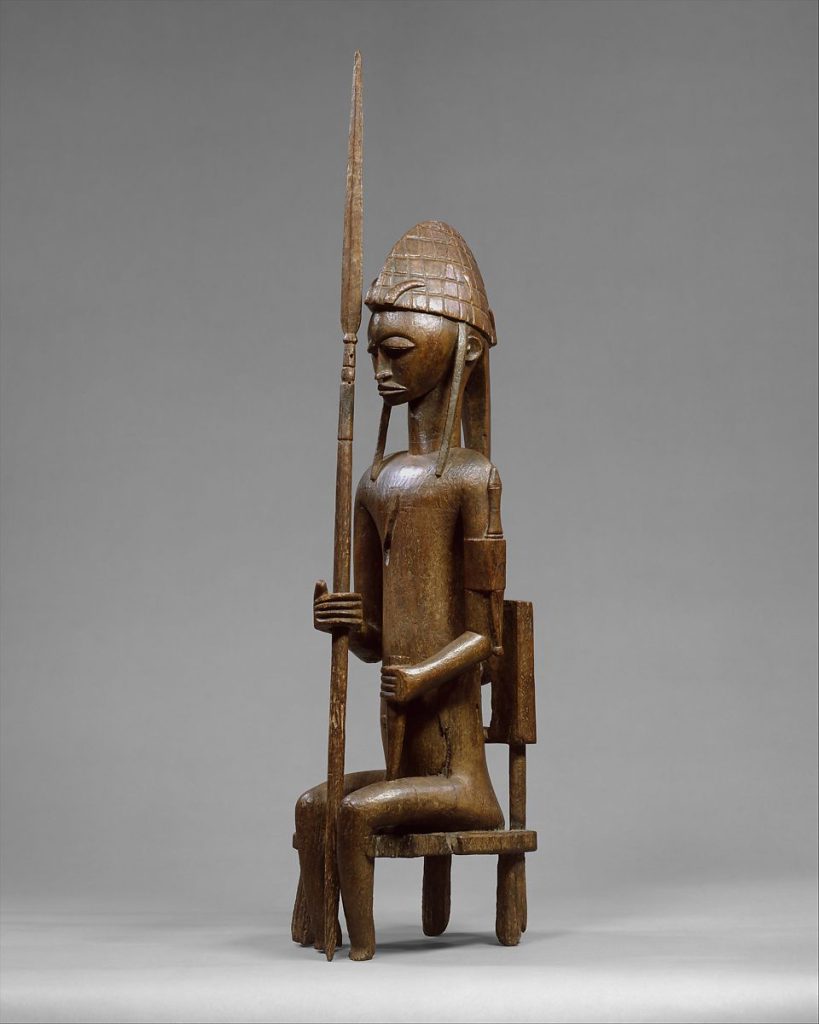អរិយធម៌ ឬ អាណាចក្រ សុងហៃ (Songhai) គឺជាអាណាចក្រមួយដែលសំខាន់ខាងផ្នែកពាណិជ្ជកម្មនៅក្នុងតំបន់អាហ្វិ្រចខាងលិច ហើយបច្ចុប្បន្នជាប្រទេសម៉ាលី (Mali)។ អរិយធម៌នេះចាប់ផ្តើមរីកចម្រើនខ្លាំង និងក្លាយជាអាណាចក្រដ៏ធំនៅក្នុងតំបន់នៅអំឡុងពេលស្តេច Sonni Ali គ្រប់គ្រង់នៅស.វ.ទី ១៥។ ទឹកដីនៃអរិយធម៌នេះស្ទើទាំងស្រុងគឺជាទឹកនៃអាណាចក្រហ្កាវ (Gao) ដែលត្រូវបានអាណាចក្រសុងហៃវាយរលំ និងគ្រប់គ្រងនៅដើមស.វ.ទី ១៥។ បន្ទាប់ពីគ្រប់គ្រងលើអាណាចក្រហ្គោហើយ អាណាចក្រសុងហៃបានតាំងរាជធានីនៅតំបន់ ហ្គោនោះ ហើយបានបង្កើតជាទីក្រុងមជ្ឍមណ្ឌលដ៏សំខាន់នៅក្នុងអាហ្វ្រិចខាងលិច។ ទីក្រុងសំខាន់ៗនៅក្នុងអរិយធម៌ ឬអាណាចក្រនេះរួមមាន ទីក្រុង ឌីជេន (Djenné) ទីមបូកទូ (Timbuktu) និងទីក្រុងហ្កាវ (Gao)។

ឌីជេន (Djenné) គឺជាក្រុងបុរាណស្ថិតនៅប្រមាណជាង១៣០គីឡូ ពីទីក្រុង Mopti និងមានចម្ងាយជាង៥០០គីឡូពីរាជធានី Bamako នៃប្រទេសម៉ាលី។ ទីក្រុងនេះកសាងឡើងនៅស.វ.ទី១១ និងនៅស.វ.ទី១៥ គ្រប់គ្រងដោយអាណាចក្រសុងហៃ។ តាមរយៈការធ្វើកំណាយស្រាវជ្រាវនៅទីនេះចាប់ពីឆ្នាំ១៩៧៧ រហូតដល់១៩៩៧ បានបង្ហាញថា នៅទីនេះមានមនុស្សមកតាំងទីរស់នៅប្រមាណជាងស.វ.ទី៣មុនគ.ស. ដោយបានរកឃើញវត្ថុសិល្បៈផ្សេងៗជាច្រើនទៀត។
ចំណែកឯទីក្រុងទីមបូកទូ (Timbuktu) ត្រូវបាគេដឹងថាជាទីក្រុងសាសនាអ៊ីស្លាមដ៏សំខាន់នៅក្នុងតំបន់អាហ្រ្វិចខាងលិច។ ទីក្រុងនេះមានទីតាំងចម្ងាយប្រមាណ១៣គីឡូពីទន្លេនីហ្សេ ហើយត្រូវបានដាក់បញ្ចូលក្នុងបញ្ជីបេតិកភណ្ឌពិភពលោកក្នុងឆ្នាំ១៩៨៨។ នៅទីនេះឃើញមានសំណង់ព្រះវិហារអ៊ីស្លាមដ៏ធំមួយដែលហៅថា Great Mosque កសាងនៅស.វ.ទី១៤។ គួរបញ្ចាក់ដែរថា អរិយធម៌សុងហៃនេះគឺគោរពប្រតិបត្តិសាសនាអ៊ីស្លាម។

រីឯទីក្រុង ហ្គៅ វិញ មានទីតាំងស្ថិតនៅក្បែរនឹងទន្លេនីហ្សេ នៅខាងកើតនៃប្រទេសម៉ាលី និងជាកន្លែងជួញដូរនៅក្នុងតំបន់សាហារ៉ា (Saharan)។ ជាពិសេសការជួញដូរ មាស ទុងដែង និងវត្ថុមានតំបន់ផ្សេងៗទៀតជាដើម។ នៅទីក្រុងនេះឃើញមានសំណង់ដីខ្ពស់មួយដែលហៅថា ជាផ្នូរស្តេច Askia (The Tomb of Askia)។ Askia muhammad គឺជាស្តេចដ៏មានកេរ្តិ៍ឈ្មោះល្បីល្បាញ និងមានឥទ្ឋិពលម្នាក់នៅក្នុងអរិយធម៌សុងហៃ និងនៅក្នុងតំបន់អាហ្រ្វិចខាងលិច។ សំណង់នេះត្រូវបានកសាងនៅស.វ.ទី១៥ ដែលជាសិល្បៈដែលបង្ហាញពីទម្រង់នៃអរិយធម៌របស់សុងហៃ។ ការកសាងសំណង់នេះ គឺធ្វើអំពីដីខ្ពស់ទៅលើ ដោយបង្កប់ជន្លួញឈើនៅជុំវិញសំណង់ដីនោះ។

មនុស្សក្នុងអរិយធម៌នេះមានជំនាញក្នុងការផលិតវត្ថុសិល្បៈ តាមទម្រង់ប្លែកៗតែមានបច្ចេកទេសខ្ពស់ ដែលភាគច្រើនប្រើប្រាស់បច្ចេកទេសស្លូនដី ទៅជារូបអ្វីមួយរួចដុតឱ្យឆ្អិន និងជាពិសេសសំណង់ស្ថាបត្យកម្មនៅតាមទីក្រុងសំខាន់ដូចដែលបានបង្ហាញនៅខាងលើ។
អរិយធម៌ ឬអាណាចក្រសុងហៃត្រូវបានដួលរលំនៅស.វ.ទី ចុងស.វ.ទី១៦ បន្ទាប់ពីស្តេច Mohammad IV បានសុគត និងមានការឈ្លានពានពីសំណាកអរិយធម៌ដ៏ទៃទៀតជាពិសេ អាណាចក្រម៉ារ៉ុក។ សរុបមកអរិយធម៌នេះរីកចម្រើនខ្លាំងបានតែជាង១ស.វ.ប៉ុន្តែបានបង្ហាញយ៉ាងច្រើន តាមរយៈសំណង់ស្ថាបត្យកម្ម វត្ថុសិល្បៈ និងវិសាលភាពទឹកដីដ៏ធំធេង និងបង្ហាញអំពីបច្ចេកទេសយ៉ាងល្អក្នុងការកសាងសំណង់ទាំងនោះ៕
—————————————-
Songhai Civilization
Songhai Civilization was one of the most important trading empires in West Africa and now in Mali. This civilization began to flourish and become a great empire in the region during the reign of Sonni Ali in the 15th century. The territory of this civilization almost became the territory of the Gao Empire, which was overthrown and ruled by the Songhai Empire in the early 15th century. After ruling the Gao Kingdom, the Songhai Empire established its capital in the Gao region and established it as a major center city in West Africa. The major cities in this civilization or empire such as Djenné, Timbuktu, and Gao.
Djenné is an ancient city more than 130 km from Mopti and more than 500 km from Bamako, Mali. The city was built in the 11th century and was ruled by the Songhai Empire in the 15th century. According to the excavation here from 1977 to 1997 show that there were settlers probably in the 3rd century because it was found many artifacts.
Timbuktu is known as a major Islamic city in West Africa. The city is located about 13 km from the Niger River and was designated in the World Heritage List in 1988. Moreover, it has a large mosque called the Great Mosque, built in the 14th century. It should be noted that the Songhai civilization is obedient to Islam.
Gao is located on the Niger River in eastern Mali and is a trading zone in the Saharan region. Especially trading in gold, copper, and various objects in other regions. In this city, there are high structures called the Tomb of Askia. Askia Muhammad is one of the most famous and influential kings in the Songhai civilization and in West Africa. It was built in the 15th century as an art form that depicts the form of Songhai civilization. This construction is built of high ground by embedding small wooden sticks around the structures.
People in this civilization are skilled in the production of art objects in various forms with high technique, most of which use the technique of clay-making of sculptures, and especially the architectural structures in major cities, as shown Above.
The Songhai civilization or empire collapsed in the late 16th century after the death of King Mohammad IV and the invasion of other civilizations, especially the Moroccan Empire. Overall, this civilization flourished for more than a century, but it was shown a lot through architecture, artifacts, and the vast territory and show good techniques in the construction of those buildings.








